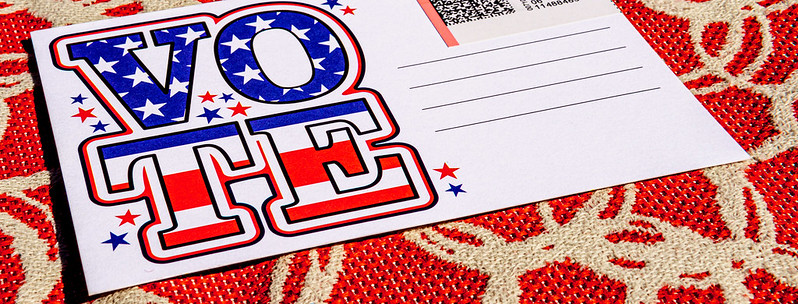
Pennsylvania governor Josh Shapiro recently announced that the state had implemented automatic voter registration (AVR), making it one of 24 states with this system.
In response, Donald Trump posted some thoughts on his “Truth Social” network:

That’s a lot to unpack, so I’ll focus on one claim: that AVR is “a disaster for the Election of Republicans.” In fact, it’s not.
The two types of AVR systems
Pennsylvania is implementing what’s called “front end” AVR. A voter who goes to a government office like the Department of Motor Vehicles is given the opportunity to register to vote, and they can choose to do so or not. People need to affirmatively “opt in” to register. Some other states use a “back end” approach, where the government office registers the person and then notifies them after the fact, at which point the person can decline to be registered. In this system, people must “opt out.”
Does AVR increase turnout?
Do AVR systems generally work? Yes. In a study of voter registration and turnout between 2010-2020, Eric McGhee, Charlotte Hill, and Mindy Romeo found that implementing AVR increased the percentage of eligible voters who were registered to vote by 3 points and increased the percentage of eligible voters who actually voted by 1 point.
Those numbers are a bit higher in systems that have had AVR systems in place for longer, since obviously it takes time for eligible unregistered voters to end up at the DMV or another government office. The effects of AVR on registration and turnout are also higher in back-end systems than front-end systems, since many voters don’t bother to opt out of voter registration in back-end systems.
If anything, then, Trump has less to fear in Pennsylvania in 2024 than he might otherwise: As a brand-new front-end system, Pennsylvania’s short-run effects on voter registration and turnout will be small.
Does AVR hurt Republicans?
But even small changes in turnout and registration could affect the balance of Democrats and Republicans – except that the evidence to date does not suggest a clear effect on the partisan composition of the electorate. In fact, AVR could even benefit Republicans. Consider these findings:
- Holly Ann Garnett examined the relationship between AVR and whether respondents in two different surveys voted. She did not find consistent evidence that AVR had different effects for respondents of different racial, ethnic, and educational backgrounds. It was not the case, for example, that AVR increased turnout consistently for Democratic-leaning groups like Black or college-educated Americans.
- Ellen Seljan, Todd Lochner, and Elijah Webb took advantage of a natural experiment in Oregon’s AVR system, the oldest in the nation. They found that AVR led to an increase in voters who were registered with neither party, which in turn produced roughly similar declines in the tendency to register as Democratic or Republican.
- Seo-Young Silvia Kim studied a specific type of AVR called “automatic re-registration” (gated version). This is when a local government automatically updates the registration of someone who moves within the county and notifies them. She exploited a different natural experiment in Orange County, Calif., and found that automatic re-registration boosted turnout by nearly 6 points in the 2018 election. But here’s the kicker: This increase was only among Republicans and non-partisan voters. There was no increase among Democrats.
Making voting easier doesn’t always help Democrats
This pattern – an increase in turnout but no necessary advantage for Democrats – emerges from other types of voting reform. For example, in 2020 Trump famously inveighed against mail voting, which many states expanded because of the covid-19 pandemic. But a study by Jesse Yoder, Cassandra Handan-Nader, and several other political scientists found that expanding mail voting in that election did not increase turnout among Democrats more than among Republicans.
And it is possible that Republicans could even benefit if voting is easier. For example, Sunshine Hillygus and John Holbein found that allowing young people to register to vote before they become eligible (a system called “pre-registration”) actually helped Republicans narrow the Democratic advantage among young people in Florida. And Jacob Neiheisel and Barry Burden found that the rollout of election-day registration in Wisconsin also advantaged Republicans.
Of course, there are many ways to facilitate voter turnout and the effect of any specific reform may vary. But Trump’s presumption that making voting easier inevitably helps Democrats is not what the evidence shows. Reducing the administrative burden inherent in voting shouldn’t be a partisan issue.



